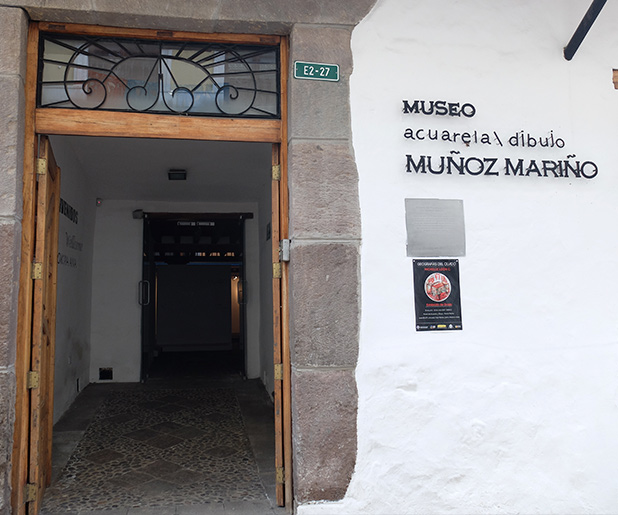The neighborhood of San Marcos is home to a charming museum dedicated to the world of Oswaldo Muñoz Mariño, a notable Ecuadorian artist of the twentieth century. We invite you to get to know the work of this remarkable painter, appreciate the beauty of the restored colonial building that houses it, and learn more about the community and cultural initiatives that the museum is proposing as an active and dynamic institution within the neighborhood of San Marcos.
The Life and Work of the Painter
Oswaldo Muñoz Mariño was was an architect and painter, known for his scenic work with watercolors. He was born in Riobamba, in the province of Chimborazo, in 1923. Muñoz Mariño lived with his family in Quito before moving to Mexico to study architecture at the Universidad Nacional Autónoma de Mexico, UNAM. He later lived and taught in Mexico, where held his first drawing and watercolor painting exposition in the Mexican architect’s association, before going on to win a national watercolor prize in 1965. It was also during his stay in Mexico that he met his wife, Cristina Chequer.
Much of Muñoz Mariño’s early watercolor work portrays scenes from urban life in Mexico City. Here you can see how his architectural training informs the way he paints street scenes and cityscapes, bringing a spatial and structural sensibility to his representations of Mexico City. When he returned to Ecuador with his wife Cristina in 1970, Muñoz Mariño continued to work as an architect, but became known for his drawings and watercolors. The painter travelled around the Ecuadorian countryside, amassing a collection of stunning Andean and coastal landscapes. He passed away in 2016 at the age of 93.

The museum and its colonial building
The Museo de Acuarela Oswaldo Muñoz Mariño is housed in one of the last colonial houses in San Marcos that retains its original structure. “This place has always been a home to artists,” says Mayah Franco, the museum’s coordinator. At the end of the 19th century, the building was used as a workshop/residence by Brígida and Gertrudis, the daughters of renowned artist Antonio Salas.
Like many buildings in the historic center, the structure went through a range of uses in the 20th century. At one point it was divided up into a number of small apartments, before eventually falling into disrepair and relative disuse. It was then that Muñoz Mariño discovered the house nd recognized its potential as a cultural space. The painter began working and first began working with FONSAL to rehabilitate the building for its present use. The museum first opened in 2010.
New projects and possibilities
The museum’s permanent collection features the body of Muñoz Mariño’s work, a plethora of drawings and watercolors that cover the span of the painters work. But more than just an archive, the Museo de Acuarela is working to become a dynamic space in the community. Over the past year, Franco and Chequer have initiated compelling projects, events, and expositions.
The Museo de Acuarela is the driving force behind an initiative known as Camina San Marcos, a project that brings together a range of cultural actors with the aim of improving the use of public space in the neighborhood.
In October, the museum organized “Chalmiñoco,” an exposition of the work of Basque artist Gorka Larrañaga, who resided in the Muñoz Mariño’s Gallery House in Mexico City, featuring drawings, paintings, photographs, sculptures. An exposition of previously undisplayed works by world-renowned Ecuadorian painter and San Marcos resident Jaime Zapata came to the museum in December, which also served as a meeting point for members of the community.
The museum closed its season in December 2017 and will reopen in March 2018 with even more events and activities.

